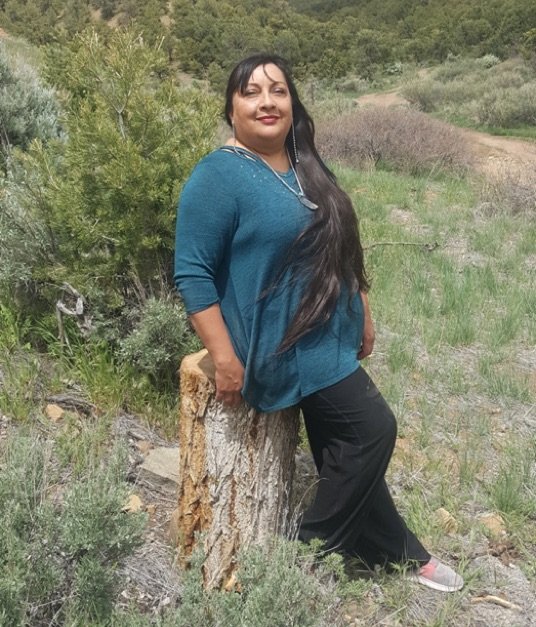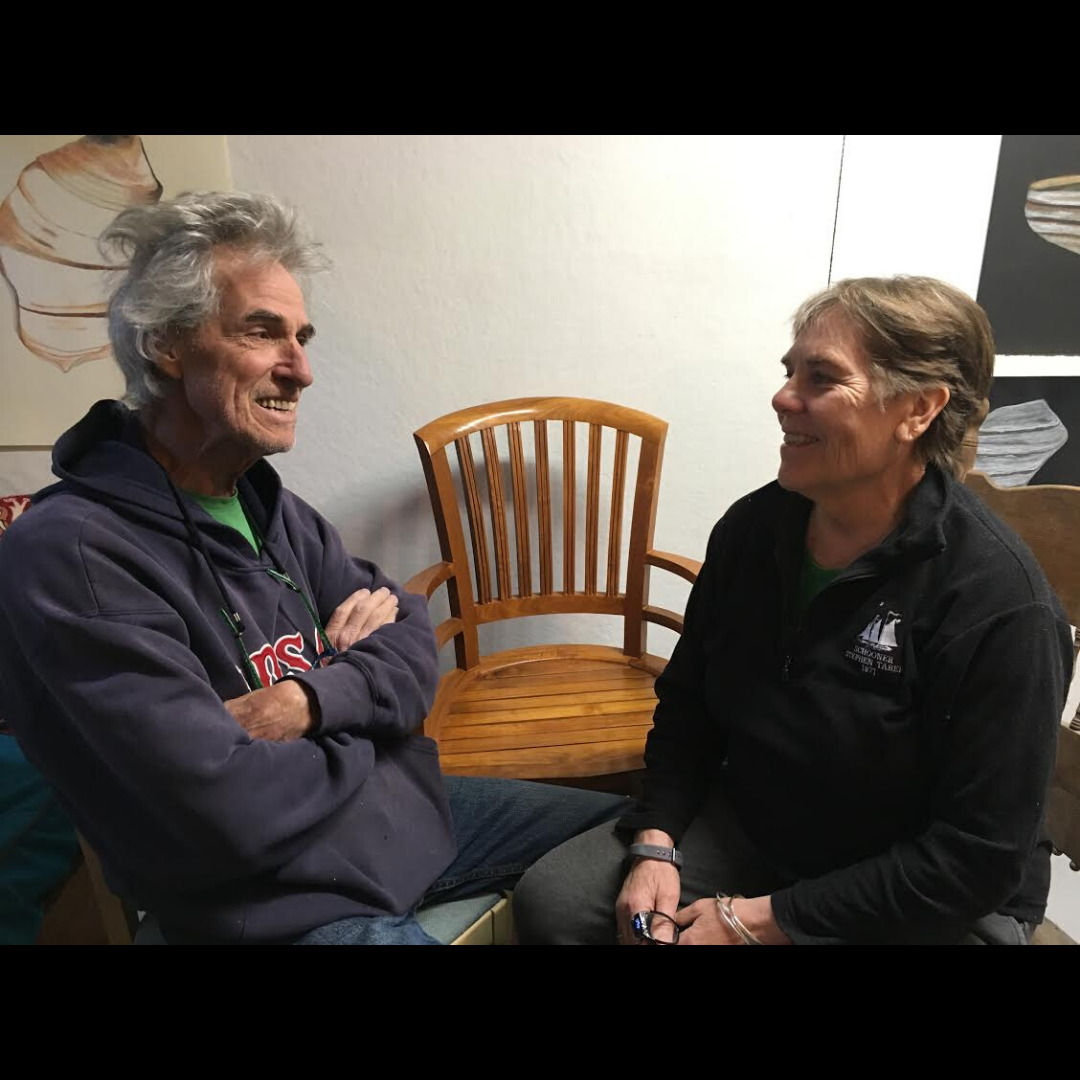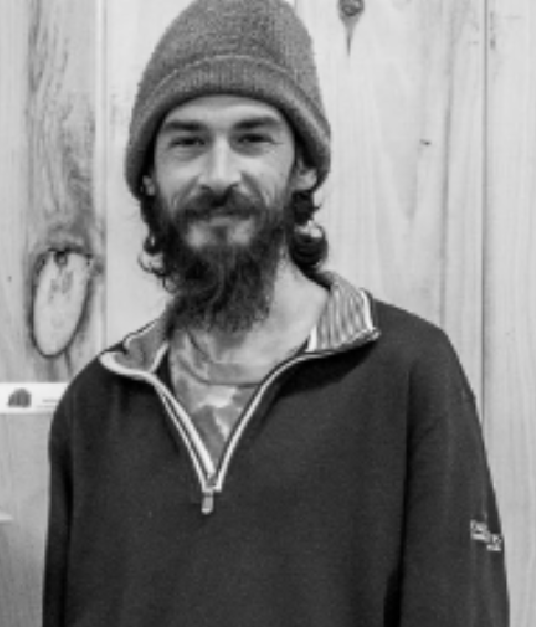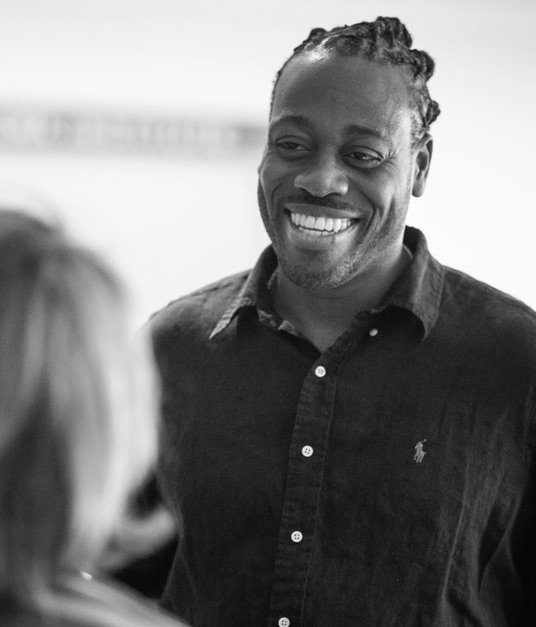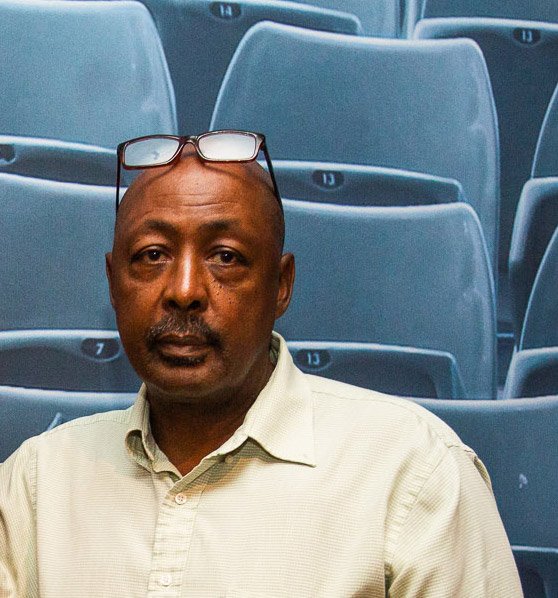Marc Bushelle was born in Barbados. Since his father worked for the U.S. Foreign Service, the Bushelle family’s home quickly became different places around the world, including the Caribbean, Europe, and Africa. This unique childhood informed his imagination, fostered a love of art, photography, and film, and enhanced his ability to connect with a large cross-section of society. As an adult, his disruptive thinking combined with his family’s compelling history and his current residence in Brooklyn New York, Marc Bushelle’s photography and art has gravitated to projects focused on the human condition. Delivering a strong message is a constant focus, and, as a father, surrounding his young daughter with positive images is vital. His work shows emotion and he enjoys capturing them and evoking them with his work.
Jane Brucker
Jane Brucker engages the viewer through her reverence for familial and historical memory. In large installations and intimate, small-scale sculpture, she touches on the poetry of existence by examining legacy, fragility, and death. Combining found objects and heirlooms with textiles, wood, glass, and cast metals, Brucker reveals her strong tactile sensibility while simultaneously exploring the visceral and the spiritual. She has exhibited in the United States, Nepal, Germany, Scotland, France, Japan and the Czech Republic. She is a professor at Loyola Marymount University, Los Angeles.
Ellen Hanauer
Ellen Hanauer is a sculptor and installation artist who has focused much of her work on science-based art, gender issues, interior spatial relationships of the natural world, and, most recently, the human condition. In the past four years, she has worked primarily in fiber and digital arts and has been traveling her continually expanding exhibition, Transform.
Hanauer has exhibited nationally and internationally in museums, universities and galleries where she has had several one-person exhibitions. Her work has been included in many scientific conferences overseas, and she has been awarded the First Theoretical Prize from Oxford University, UK. Hanauer’s national commissions have been exhibited in Tarpon Springs, Florida, and throughout the tristate area including Rockefeller Center and Riverside Park. Her work is in the permanent collections of The Noyes Museum of Art, NJ; Montclair Art Museum Education Collection, NJ; (the late) Ivan Karp, OK Harris Gallery, NY; The Princeton Review, NY; Organon, NJ; Lynda Zycherman, Chief Conservator of Sculpture, MoMA, NY; Kevah Konner Bus Company, NJ; Atlanticare Foundation NJ; and National Museum of Women in the Arts, Washington, DC.
Patricia Michaels
Patricia Michaels, of Taos Pueblo, is a world-renowned Fashion and Textile Designer. She has studied at the Institute of American Indian Arts and completed a 4-year independent study at Chicago Art Institute with Nick Cave as her mentor, and she has worked at the Santa Fe Opera in the costume department and with an Italian tailor in Venice, Italy.
She was first runner-up in Season 11 of Project Runway. The Smithsonian’s National Museum of the American Indian awarded her the inaugural “Arts & Designs Award”, and she was a speaker at the Bill & Melinda Gates Scholar Foundation. These are just two of her many other accolades.
Her work as a Native CEO of PMWaterlily LLC takes her around the world to places like New Zealand, South Africa, Canada, Europe, the USA and, at least twice a year, to NYC for fashion week to do fashion, lectures, presentations, workshops, fundraisers, artist in residencies, and inspirational speeches.
She has completed a home collection with “Akin Homes,” and uniforms and boutique collections for Hotel Chaco in Albuquerque, New Mexico, as well as the boutique collections for Hotel Eldorado Inn and Spa at Loretto in Santa Fe and El Monte Sagrado in Taos, New Mexico.
Patricia works as an activist with organizations like Missing & Murdered Indigenous Women, Community Against Violence, American Indian College Fund, Big Brother & Big Sister, Art Smart, and Preservation of Native Culture and Natural Resources. Social media and public relations are key to keeping the original Native Voice authentic.
Her biggest driving force is her two beautiful children Gabriel & Margeaux, helping the elderly and youth, and empowering women. Her cottage industry encourages a women’s voice and supports organizations like Missing & Murdered Indigenous Women, Community Against Violence, American Indian College Fund, Big Brother & Big Sister, Art Smart, and Preservation of Native Culture and Natural Resources.
As usual, Patricia is occupied with many developments. She is currently being filmed for an unscripted TV series about her and her companion James’s lives. She also sits on Taos Historical Museum Board and her works are continually emerging in 5-Star resort hotels, museums, museum shops and boutique galleries throughout the USA. She is actively working on the first Native American Opera as the designer for costumes and sets. In between this, she manages time for lectures and maintains an active involvement with her Taos Pueblo cultural lifeways and beliefs.
Ashley and Mic Billingsley
Billingsley Billingsley is the creative team of Ashley and Mic Billingsley. Their projects blend traditional artmaking methods and forms such as painting and sculpture with site-specific, time-based media and installation elements.
Ashley Billingsley’s paintings, drawings, and installations address landscape as a site of human vulnerability, turbulence, and doubt. Her influences range from martial arts philosophy, practice, and cinema to the folklore and sense memories of her home state of Virginia. She maintains a studio in East Boston, and she works at the local and national levels of Community Action, a network of nonprofit human services organizations that create opportunities for people with low incomes to build economic resilience and thrive. She received a BFA from the University of Minnesota-Minneapolis and an MFA from the School of the Museum of Fine Arts, Boston/Tufts University combined degree program. Select exhibitions include: Indefinable Nature: Ashley Billingsley and Sarah Wentworth at the Hynes Convention Center in Boston, MA; An Aesthetics of Slowness at Dorsky Gallery in Long Island City, NY; and On the Streets, an exhibition at JavaArts in Phnom Penh, Cambodia, sponsored by apexart, NY.
Mic Billingsley is a creative collaborator, problem solver, and museum exhibition professional. He works with institutions and individuals to realize projects ranging from one-of-a-kind art objects to large scale installations. He comes to art by way of science, engineering, and furniture making and makes work that revolves around a core interest in identifying individual features and amplifying them to bring forth qualities that are present but often unnoticed. Past projects include: casework construction and archival lighting design for the Declaration of Independence at the Massachusetts State Archives; the design and construction of “Underpinnings,” a kinetic drawing sculpture created in collaboration with artist Ethan Murrow as part of the Currier Museum of Art’s Fall 2018 through Spring 2019 “Hauling” exhibition.
Sally Fine
Sally Fine is a washashore to Cape Cod from a town just west of Chicago. She holds a BFA from Ohio University and an MFA from Boston University. Fine’s sculpture is constructed of a wide array of materials, ranging from wood, metal, glass, and new media. Her work is represented in local and international collections both private and public. Fine exhibits her work locally at Boston Sculpture Gallery in Boston’s South End.
Margot Stage and David Crane
Margot Stage is a multi-disciplinary visual artist who explores memory and legacy in sculpture, monoprints, and fiber art. She worked for 25 years as a National Public Radio host, reporter, and producer before turning to visual art in 2001, essentially coming home to an earlier self. Her art was immediately accepted into juried exhibitions and has been shown extensively in galleries, universities and museums around the U.S. Stage is a member of the Cape Cod Museum of Art, Provincetown Artist Association Museum, and Truro Center for the Arts at Castle Hill. Her work has appeared in Fiber Arts Magazine, The Boston Globe, The Lowell Sun, Wild Apples, The Middlesex Beat, The Ithaca Journal, The Boston Phoenix, and The Westford Eagle. Her art is held in the collections of Enterprise Bank, The Jeanne D’Arc Credit Union, The Lowell Health Center, and by many private individuals. She lives with her artist husband and their dog in Eastham, Massachusetts.
David Crane’s original work in sculpture started with welding steel during the 1960s. He later moved to wood carving, and then to wood assemblages. He uses found and cast-off detritus, collecting material from beaches, millwork scrap bins, dumpsters, and forests. Everything from exotic wood like purple heart, to CDX-grade plywood, to torn veneer can capture his imagination, becoming the ingredient that conveys messages inspired by the natural world. The process of bringing together various, often discordant, pieces of wood into a composite whole is a challenge that invites viewers to draw their own interpretations. Crane has exhibited in galleries around Massachusetts. His work is held in the collection of Thoughtforms Corporation and by many individuals. He is a member of Cape Cod Museum of Art (where he volunteers on the hanging/installing committee), Provincetown Artists Association Museum, and Truro Center for the Arts at Castle Hill. He lives with his artist wife and their dog in Eastham, MA.
Brian Holbrook
My name is Brian Holbrook, and I’m 34 years old. I started building weird things when I was young. Now I’m older and still building weird things. I enjoy playing with angles and how everyday things are perceived. I’ve been doing fine woodworking for 3 years, I went to school at the Vermont Woodworking School. I feel like I’m better at designing and building things than writing bios. I’m very excited to be a part of A Seat at the Table because my philosophy has always been similar: do things your own way, for your own reasons, no matter what people might say.
Marlon Forrester
Marlon Forrester, born in Guyana, South America, is an artist and educator raised in Boston, MA. Forrester is a graduate of School of the Museum of Fine Arts Boston, B.A., and Yale School of Art, M.F.A. 2010. He is currently a painting lecturer at School of The Museum of Fine Arts Boston at Tufts University and BPS Visual Arts Teacher. He is a resident artist at African-American Masters Artist Residency Program (AAMARP), adjunct to the Department of African-American Studies in association with Northeastern University. He is an artist who explores the corporate use of the black male body, or the body as logo through the lens of basketball, through painting, drawing, sculpture, and installation.
Jeffrey Chandler
I am a self-taught artist who lives and works in Boston, Massachusetts. I create art from wood that has been reclaimed from things thrown away. It is fascinating for me to find an object and problem solve how I am going to transform a discarded piece of junk into a treasure. I use recycled wood and other materials out of necessity and also as a statement about this “throw away society.” Recycling is necessary to sustain the planet’s resources and is my small way of using these materials to be innovative and creative as an artist.
My artwork often depicts people. Sometimes it is a portrait, at other times a couple dancing, a musician playing an instrument or person singing. Masks are a recurring theme in my work. I am inspired by African and Native American art and often use symbols from these cultures in my work. While African and Native American masks are used in ritual, my masks are purely decorative and serve as a reminder of my rich heritage. Sometimes I make art that hangs on walls, but many of my pieces are freestanding sculpture. Art chairs, doll houses, and castles are other projects that I like to make.
When I was first starting out as an artist, I used hand carving tools to carve wood. This process was satisfying but it took a long time. Eventually, I started using power tools. A Dremel, a drill, an orbital sander, a router, various saws and wood burning tools are what I use to get the job done. I transform a reclaimed piece of wood by using a rotary tool to gauge out a design, then it is sanded, then I might use my wood burning tools to make lines, shapes, and textures. Wood dyes, inks and stains are used to fill in color
What I want my work to convey is twofold – mastery of the medium and a clear expression of the vision I am trying to convey. I have been persistent in creating work throughout the years. During that time, I have learned a lot about what tools can and cannot do and about art and design in general. I now have a body of work that I am pleased with.
I am inspired by nature, my family, other artists, music, film and sports.



